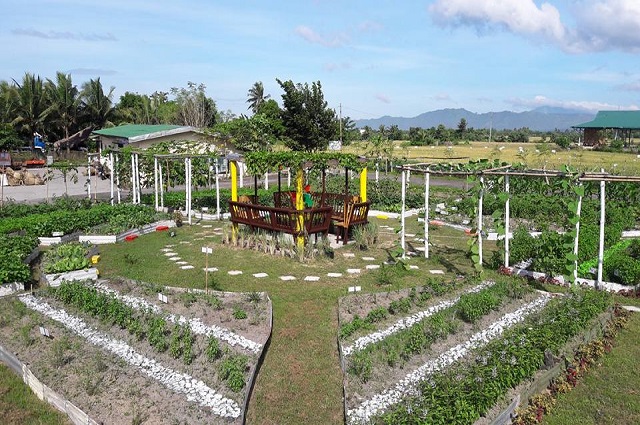 LIGAO CITY, ALBAY ― PhilRice’s branch station in Bicol featured edible landscaping (EL) as a mixture of agricultural “beauty and utility” during their farmers’ field day, November 9.
LIGAO CITY, ALBAY ― PhilRice’s branch station in Bicol featured edible landscaping (EL) as a mixture of agricultural “beauty and utility” during their farmers’ field day, November 9.
With the theme, AgriTurismo: Bukiring kay ganda, dagdag kita sa magsasaka, the event was attended by over 400 farmers, academicians, and local government officials from the provinces of Albay, Camarines Norte, Camarines Sur, and Sorsogon.
EL is a small-scale crop production system that integrates food plants within an ornamental or decorative setting. Edible plants such as vegetables, fruits, and herbs substitute ornamental plants used in traditional landscaping.
Some of the food plants that can be integrated with EL are medicinal plants, culinary herbs such as stevia, Italian oregano and basil, high value crops such as lettuce and cabbage, and those included in pinakbet, a traditional Filipino food.
In Bicol’s EL model, papaya trees were planted in the surroundings as wind breakers. It also used zinnia and marigold as aesthetics while bamboo poles were installed as trellises for ampalaya and upo.
“Other than aesthetics, edible landscaping allows farmers to reap healthy foods from their backyard and it may even be used to augment their livelihood,” said Gilbert Morente, science research assistant of PhilRice Bicol.
Morente added that EL can be done by farming families in the vicinity of their households with just about 200 square meters of lot.
“In EL, we do not necessarily mean that what we have are all edible plants. We can use flowering plants that can either attract beneficial insects or repel harmful organism,” Morente clarified.
EL is in line with the Intensified Rice-Based Agri-Bio Systems (IRBAS) program of PhilRice that promotes farm intensification, crop diversification, food security, and sustainability.
Glenn De Peralta, senior science research specialist, added that the EL project primarily aims to “establish an agritourism site that emphasizes educational and recreational components of field visit activities.”
The staging of this season’s Lakbay Palay also featured modern rice technologies such as the Minus-One Element Technique (MOET) and the Alternate Wetting and Drying (AWD). Rice varieties for different ecosystems and farm machines were also showcased to the participants.




